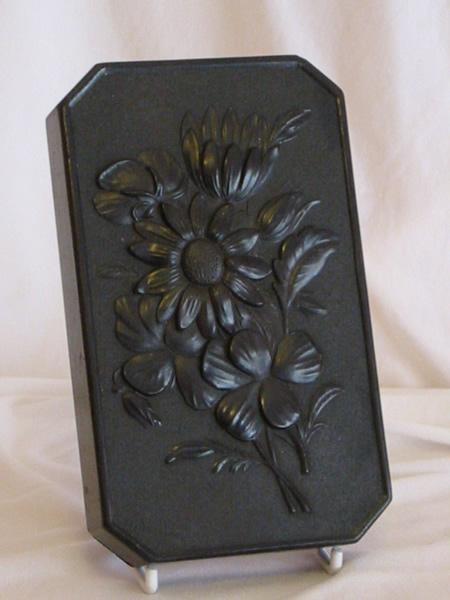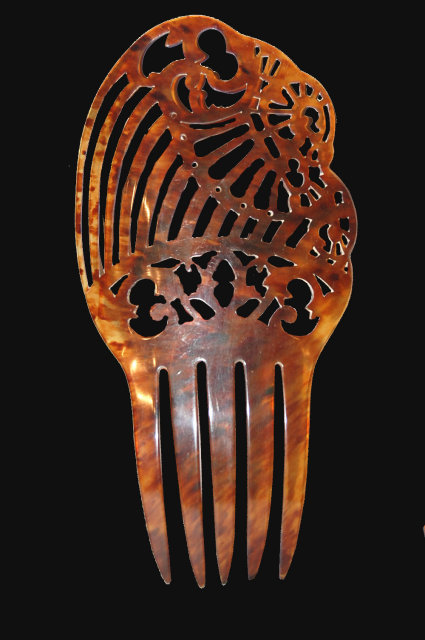 |
| Plastic boot buttons |
I recently acquired some original boot buttons from who-knows-when. They could be as old as the 1860s, as young as the 1920s, but are most likely from 1890s-1910s. They are plastic, with a metal shank, and surprisingly strong. I did break one, though, and the material inside was...weird...but...indeed plastic.
So, here's a little run-down of what plastics existed and some of the things they were used for pre-1900. And next time some snark gives you trouble about the plastic buttons on your Victorian bodice, you can give them a nice send off with these little gems:
Bois Durci - invented 1855, used until post WWI. This plastic is made of ground wood and either egg, gelatine, or blood albumen for the binder. Items were press molded, and included such things as picture frames, belt buckles, brooches, clocks, paper weights, figurines, and purses.
 |
| A bois durci paperweight |
Parkesine - patented 1862, but was unstable, and few items remain. Parkesine is an early form of celluloid, and produced such items as knife handles and commemorative medallions. Very few examples remain and are difficult to identify.
 |
| Think that antique comb is tortoise shell? Think again - it's celluloid |
 |
| A vulcanite brooch |
Vulcanite/Ebonite - process first used in 1839, and still in use today. Vulcanite is made from hardened rubber, through a process of heating the rubber with sulpher. It was very popular and widely used for imitation jet jewelry, as well as false teeth (weird).
Other old forms of plastic:
Gutta Percha - a naturally occurring rubber-like substance.
Casein - made from skimmed milk, lactic acid, and formaldehyde.
Shellac - made from the secretions of the Lac beetle.
Union - made from shellac and additional fillers.
So there you have it - Victorian plastics used for all manner of things. So when you're deciding on your hair combs, brooches, and buttons for your next Victorian costume, don't be afraid of the plastics! If it looks like ivory, horn, bone, toirtoise shell, mother of pearl, or jet, you're all good. :-)